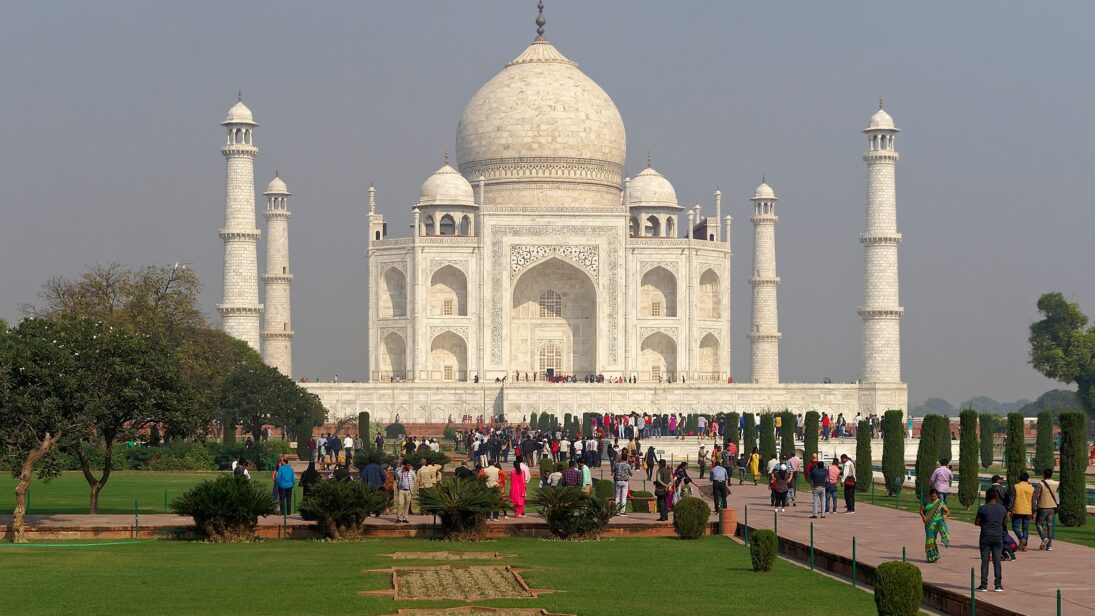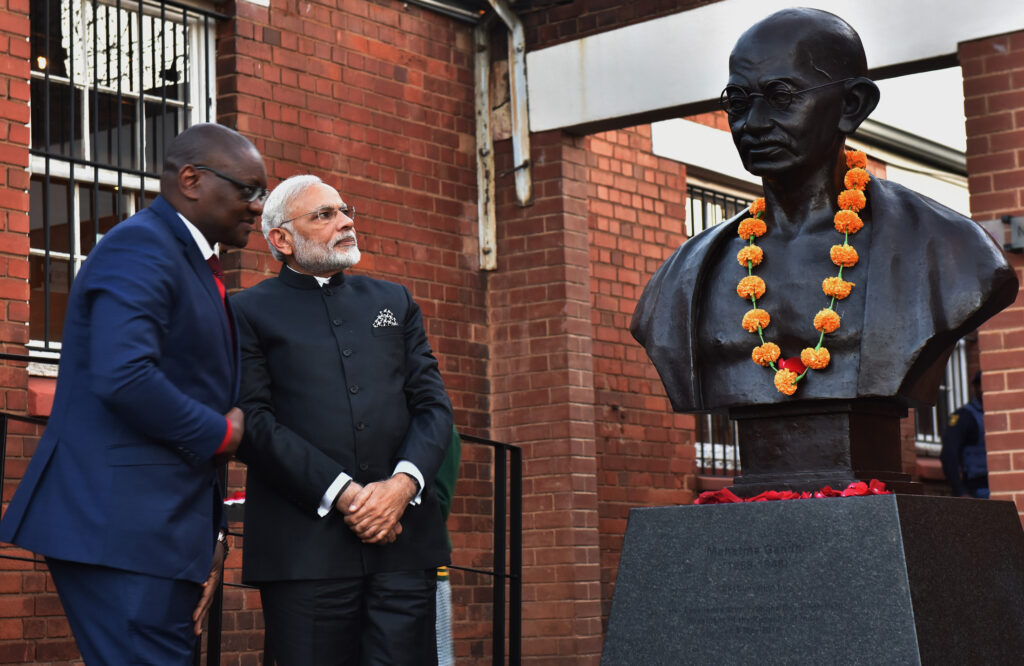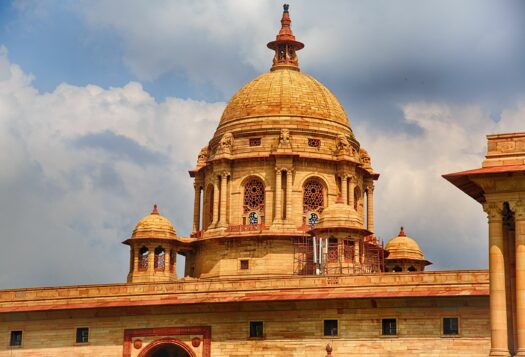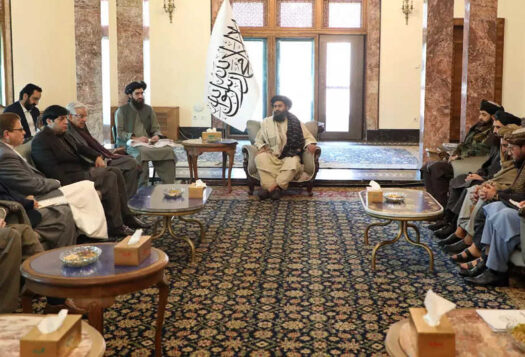
On January 26, India celebrates its 73rd Republic Day. The country remains strong militarily, as one of only eight nuclear powers. Its economy is improving after a sluggish few years and India is projected to becoming the world’s third biggest economy by the year 2030 in nominal GDP terms. But culturally it is walking a dangerous path. Those who dream of making India an exclusivist Hindu Rashtra (state) are in the driving seat: they are determined to dismantle secular democratic India and to build a Hindu state from its debris.
While the enduring nature of India’s democracy is laudable, it has taken several steps backwards in recent times. Two pillars of Indian identity are in jeopardy: India’s diversity, embodied in Gandhi’s inclusive Hinduism, and its love, beauty, and acceptance, symbolized by the Taj Mahal. Together these two symbols incarnate the complex historical culture of India, composed of Vedic and Mughal sensibilities. Gandhi represented an inclusive interpretation of Hinduism and the Taj, the Sufi eclecticism that inspired the early Mughal emperors. These two streams of tolerance and mutual acceptance have been the bedrock of Indian “Hindustani” culture. Together they stand tall against the rising tide of Hindu nationalism that in pursuit of Hindu “essence” (Hindutva) opposes both inclusion and diversity. It is because of the strength of what Gandhi’s practices and the Taj symbolize that these principals are under systematic attack by Hindu nationalists, determined to erase them.
Symbols of National Heritage
Mohandas K. Gandhi has for nearly a century defined India’s values in the eyes of the world. He inspired the world with his resolute advocacy of nonviolence (ahimsa). His philosophy of satyagraha (the force of truth) won him the title of Mahatma (a great soul) in his homeland and deep moral admiration around the world. His strategy of nonviolent protest and civil disobedience played an instrumental role in India gaining independence from Great Britain. Gandhi’s spiritual influence on Indian political leaders like Jawaharlal Nehru ensured that independent India pursued the values of secularism, pluralism, and democracy. Adherence to these values brought India international respect and recognition.
Two pillars of Indian identity are in jeopardy: India’s diversity, embodied in Gandhi’s inclusive Hinduism, and its love, beauty, and acceptance, symbolized by the Taj Mahal.
These values were not simply Gandhi’s personal philosophy, they also represented how he understood and lived Hinduism. An inclusive Hinduism accepts Muslims as equal citizens of India and is the bane of Hindu nationalism.
The Taj Mahal represents the fusion of Indian Muslim culture and the golden age of Indian Islam and the emerging syncretic ethos of a composite, multicultural, multireligious India. India under the Mughals contributed a fourth of the global economy and was easily a major world power. During the reign of emperors Akbar, Jahangir, and Shah Jahan the two faith communities co-existed and comingled. Many Mughal princes were offspring of Hindu Rajput and Timurid clans. This syncretic age is a crowning glory of not just Muslim rule in India but also Indian glory in world history. For centuries it has represented the beauty of India while also manifesting the Prophetic tradition—God is beautiful, and He loves beauty. India today can strive for the communal harmony of the early Mughal era, but not by waging a culture war against the very symbols of its greatness.
Killing Gandhi’s Hinduism
Hindu nationalism has launched a determined assault on these two pillars of India’s identity. Gandhi was assassinated by a Hindu nationalist Nathuram Godse in 1948. The Hindu Mahasabha, an important member of the coalition of Hindu nationalist groups that includes the ruling party of India (the Bharatiya Janata Party), has begun celebrating Godse’ birthday as a holiday. A knowledge center in Gwalior, Madhya Pradesh was recently dedicated to him. Meanwhile, the Chief Minister of Uttar Pradesh Yogi Adityanath—a prominent Hindu nationalist— has attempted to rename the historic city of Meerut Godse city, while statues memorializing Gandhi’s assassin have cropped up across the country. Reimagining Gandhi’s assassin as a national hero has become a project of Hindu nationalism. He is being hailed precisely because he represents a Hindu fundamentalist foil to Gandhi’s inclusive Hinduism, as Hindutva advocates are trying to make Godse the father of a Hindu nation.

There are two principal reasons Hindu nationalists have targeted the inclusive pillars of Indian identity. Hindu nationalism’s interpretation of Hinduism depends on the unraveling of Gandhi’s—which advocated non-violence and peace among Hindus, Muslims, Christians and Sikhs. Justifying his assassination and lionizing Godse is a part of this: the celebration of a killer is repudiation of ahimsa, or nonviolence, the core principle of Gandhi’s Hinduism. Godse’s Hinduism —embodied in the ideologies and practices of the RSS—is exclusivist, undemocratic and seeks to eliminate religious minorities. Calls for genocide of Muslims by Hindu religious leaders in the holy city of Haridwar underline the dangerous extent to which this hateful ideology has gained momentum.
Undermining the Legacy of the Muslims
Hindu nationalists have sought to exclude Muslims from India’s national consciousness by targeting symbols of Muslim culture heritage. They are renaming cities and landmarks that carry Muslim names and advancing narratives to portray all Muslims as foreign invaders and aliens. In seeking to rewrite the historical narrative, they have attempted to downplay the influence and history of the Mughals. The Taj Mahal is a thorn in their side and the most prominent standing reminder of the Mughal era.
Some Hindu nationalist leaders display an astonishing degree of hypocrisy in their efforts. UP Chief Minister Yogi Adityanath declared that Taj Mahal could not be a symbol of India and removed it from the state tourism promotion material. But when President Trump visited India, Yogi presented him with a framed picture of the Taj Mahal. Some members of the BJP are now claiming that the Taj Mahal will be renamed the Ram Mahal. To make the threats credible, Yogi renamed the Mughal Museum near the Taj after a Hindu king who fought the Mughals. Like Adityanath, Prime Minister Narendra Modi has also taken selective advantage of Gandhi’s international reputation: during the 150th celebration of Gandhi’s birth in 2019 he declared that Gandhian Values and principles give strength to the world. Would Gandhi approve of the laws and policies that target religious minorities?
How can India be an exclusively Hindu nation if Hinduism is inclusive and if the symbol most recognizably Indian is a Muslim monument?
Claims that the Taj Mahal was a Hindu temple before it was the Taj Mahal have gained traction among Hindutva activists, a narrative line that has historical antecedents in the 1992 demolition of the Mughal-era Babri Masjid. In 2020, the Indian Supreme Court acquitted all BJP members involved in the mosque’s destruction while approving the construction of a Ram temple in Ayodhya.
How can India be an exclusively Hindu nation if Hinduism is inclusive and if the symbol most recognizably Indian is a Muslim monument? Hence the targeting of Gandhi and the Taj Mahal. This gambit is an element of a broader strategy that includes policies such as the Citizens Amendment Act of 2019 (CAA), the abrogation of article 370 and 35A of the Indian constitution, and violent practices such a “love Jihad”, lynching and gharwapsi (conversion of Muslims and Christians to Hinduism) designed to subordinate Muslims and Christians to Hindutva.
As Indians celebrate their republic, I hope they celebrate and safeguard its inclusive values and its diverse heritage.
A discussion from Dr. Muqtedar Khan of his South Asian Voices article can be watched here as part of his YouTube series Khanversations.
***
Image 1: Wikimedia Commons
Image 2: Narendra Modi via Flickr


